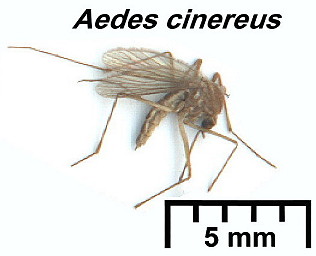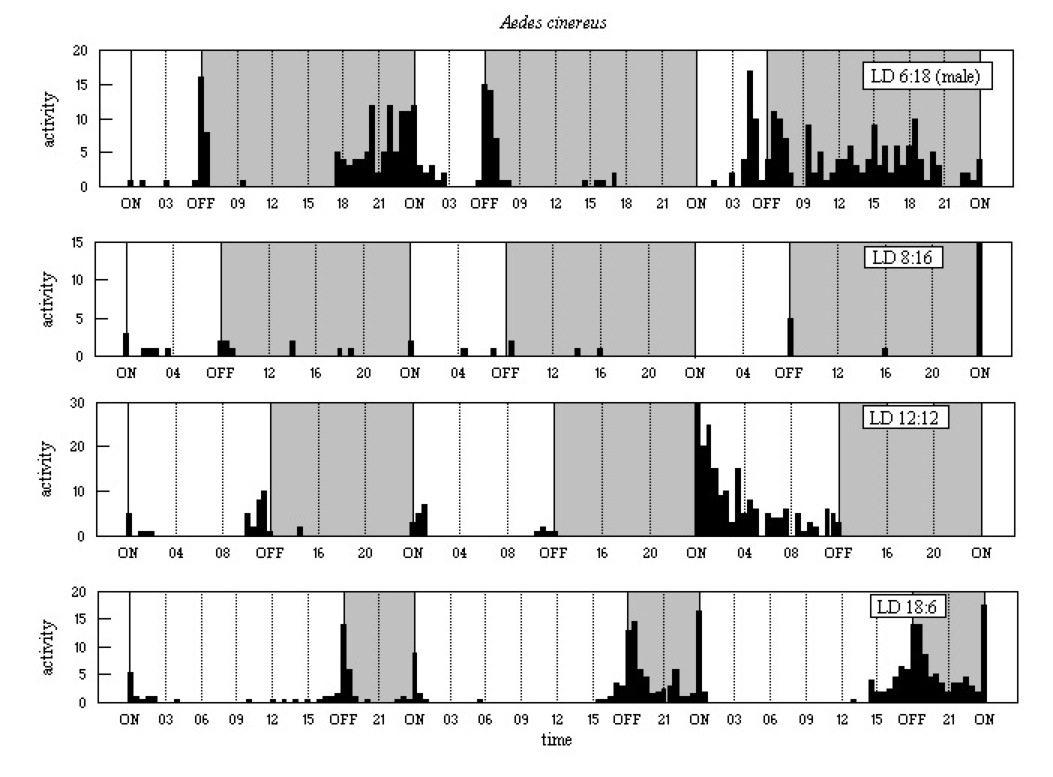Biological Clocks in Mosquitoes
|
 A forest species of the
northern Holarctic region, the type locality is Europe. It is known
from up to 69°N in Norway and south to around 45°N in Europe and 35°N
in the USA (Carpenter & La Casse, 1955; Stone et al.,
1959). It often is regarded as a nuisance species, troublesome between
June and August, biting man primarily around dusk (Marshall, 1938;
Natvig, 1948; Covell & Shute, 1954; Vockeroth, 1954). Snow (1990)
notes that they feed on mammals, including man, at dusk and during the
night, and also in the daytime in shaded situations.
A forest species of the
northern Holarctic region, the type locality is Europe. It is known
from up to 69°N in Norway and south to around 45°N in Europe and 35°N
in the USA (Carpenter & La Casse, 1955; Stone et al.,
1959). It often is regarded as a nuisance species, troublesome between
June and August, biting man primarily around dusk (Marshall, 1938;
Natvig, 1948; Covell & Shute, 1954; Vockeroth, 1954). Snow (1990)
notes that they feed on mammals, including man, at dusk and during the
night, and also in the daytime in shaded situations.
Experimental material
One female was trapped attacking man and the others were reared, in
daylight, from larvae collected at Morden Bog, Dorset, England
(50°41'N) on the evening of 24 July 1968 (sunrise 0516h and sunset
2056h BST, daylength 15h40m). The trapped female was used in
experiments from 29 July, and reared adults were recorded from 9 August
1968, when they were 4-5 days post-emergence. Recordings were made with
light-off at 2100h BST.
Experimental regimes
LD 6:18, one male, recorded for days two to five.
LD 8:16, one (captured) female, recorded for days three to six.
LD 12:12, one female, recorded for days two to four.
LD 18:6, two females, recorded for days two to six.
Results and discussion
The activity patterns are shown in Figure A13 below.
The results, although not very satisfactory, perhaps due to the low
numbers of adults, show a bimodal E' and M'. Possibly
this is a true crepuscular pattern, as E' is strong and diffuse
in LD 18:6, and this fits the reported field pattern of dusk activity.
Figure A13

|
©1998, 2010 - Brian Taylor CBiol FSB FRES 11, Grazingfield, Wilford, Nottingham, NG11 7FN, U.K. Comments to dr.b.taylor@ntlworld.com |
href="\crhtml\aecine.htm"